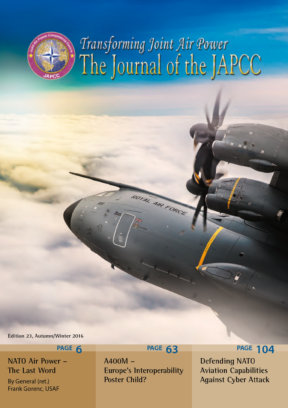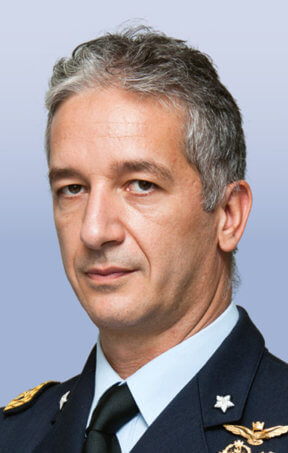Introduction
In a changing and unpredictable security environment, the quest for higher quantity and quality of allied military capabilities is a logical one. However, despite widespread austerity and limited defence budgets, there is a call for rebalancing defence spending and capabilities between European NATO Nations, Canada, and the United States to achieve an equitable sharing of the defence burden. The same applies amongst European Union (EU) Member States with regard to their balanced commitment to the Common Security and Defence Policy. So far, this has led to initiatives such as Smart Defence, the Connected Forces Initiative, and Pooling & Sharing (P&S). The European Defence Agency (EDA), which was founded in 2004, is an EU body whose primary role is to foster European defence cooperation in that regard. It consists of 27 ‘participating Member States’ (pMS). Of the 28 EU Member States,1 only Denmark does not participate in the EDA.2 EDA-sponsored defence cooperation is not limited to co-financed purchasing of modern equipment but also encompasses the development of interoperability concepts and common training requirements and solutions.
While there has been cooperation in many areas, airlift training has remained a national responsibility, with rare combined and collective training opportunities focussed on specific Air Transport (AT) mission types only. While the fighter aircraft community has trained for years for complex missions and multinational configurations (e.g. Tactical Leadership Programme, ‘Flag’ exercises, large NATO exercises in European airspace), the air transport community has generally operated in isolation. In most exercises, AT is only used for real world logistics in support of other exercise participants and lacks operational ’advanced airlift training’ because no exercise/training scenario is built for it. However, preparing for contemporary airlift operations requires training in multinational environments with challenging scenarios to simulate the complexities that are to be expected across the full spectrum of future contingencies.
Some nations have been able to send crews to the US Advanced Airlift Tactics Training Course, but, in an era of austerity, doing so is not an option for many militaries. In recent years, European partner organizations have responded to this requirement by developing collective, standardized training opportunities for air crews that enhance collaboration and interoperability of the AT community. Nations have enthusiastically embraced the programs and training opportunities, which, as seen in the European Advanced Airlift Tactic Training Course (EAATTC), are filling the training gap and deepening AT capability. Experts also point to the continued need for developing these courses as airlift capacity expands.
Foundation of the EATF Programme
Efforts to address the extensive collaboration requirements related to military air transport began in 2011, when the EDA founded a partnership programme named ‘The European Air Transport Fleet (EATF)’. Twenty ‘contributing Member States’ (cMS) eventually joined this programme and the door remains open for other nations. The vision for the EATF is to implement a flexible and inclusive partnership between national and multinational military air transport fleets and organisations in Europe, aimed at the enhancement of standardised air transport services, accessed through an identified process, and using simplified common procedures. The EATF’s long-term vision is the efficient usage of the existing and future assets of various European AT fleets, regardless of type and origin, as they are made available by the cMS for military needs. The desired end state is an efficient Networked Fleet that will satisfy quantitative and qualitative requirements for national and collective military air transport in the EU, including air-to-air refuelling, by the most cost effective use of either nationally owned capacity or pooled, shared, exchanged, or chartered capacity.3
That being said, it has to be noted that the EATF does not intend to create a supplementary AT structure in Europe, but to better coordinate and strengthen structure derived from existing or future arrangements.4 The EATF desires the optimal use of available and future capacity among EATF cMS through wide-ranging coordination and exchange mechanisms. These shall include the exchange of flight hours, air-to-air refuelling, and support services, which will be supported by IT networks linking national and multinational military air transport organisations such as the European Air Transport Command (EATC) or the Movement Coordination Centre Europe (MCCE) for improved operational efficiency and better dissemination of information.5
The management and implementation of the whole EATF-programme is achieved by a governance structure consisting of a higher level ‘Management Committee’ (MC) for strategic guidance assisted by an ‘Executive Steering Group’ (ESG), which is convened at the discretion of the MC, if necessary. At the lower level, a ‘Project Management Group’ (PMG) and other ad hoc working groups were created to manage subordinate projects of the overall EATF programme.6 In that regard, the “Ã la carte” nature of the EATF is taken into account, whereby cMS may have differing levels of commitment to each subordinate project.7
AT Training Solutions under the EATF Programme
The EATF’s strategy is to reach its desired end-state through pursuing the following three objectives: (1) Overall capacity building by P&S and better coordination; (2) Improvement of interoperability through harmonized and simplified rules and regulations as well as common training and exercise; and, finally, (3) Maximised cost effectiveness and service quality through optimal interaction and efficient AT asset allocation using a common IT network. In the EATF Phase 1 (Start-Up), the programme primarily focussed on managing shortfalls by providing tangible deliverables in priority areas. To this end, quick wins were put forward, for instance in the area of Operations & Training (O&T) with the setting up of block-trainings and common exercises.8 This was the main project for the EATF’s ‘Ad Hoc Working Group for Operations and Training’ (AHWG O&T). Within the EATF Phase 2 (Implementation), the following important training opportunities became a reality:
European Air Transport Training (EATT). The EATT is a multi-national AT event of two weeks which has been conducted annually since 2012. It includes Intelligence, Maintenance, Aeromedical Evacuation, Combined Air Terminal Operations and Cross-Paratroopers training.
European Advanced Airlift Tactics Training Course (EAATTC). The EAATTC is a multi-national AT course of one or two weeks, which has been held several times per year since 2014. It aims to provide air crews with a robust airlift tactics training syllabus to enhance interoperability between European air forces.
European Advanced Tactical Instructor Course (EATIC). The EATIC is a one-week course which has been held several times per year since 2015. It educates the instructors to be employed in the other EATF training events.
European Air Transport Symposium (EATS). The EATS is a yearly meeting focussed on AT operations and training challenges with the ultimate aim of improving interoperability as well as the quality of the upcoming EATF training events.
EAATTC Course of Action
While three EAATTC iterations were held in 2015, four occurred in 2016, with different numbers of Member States, aircraft and crews attending these training events. Each course aimed to achieve a higher level of interoperability between airlift crews through the European training syllabus that was developed based on the combined experiences of instructors coming from Belgium, Germany, Spain, France, Italy, and the Netherlands. The courses are held in several locations: Plovdiv, Bulgaria; Orléans, France; and Zaragoza, Spain. During the curriculum, the difficulty of flight missions increase from low-level flying with air-to-air and surface-to-air threats to ‘maximum effort landing’. Three major levels of operational complexity are covered: single ship, multiple ship, and a new training section using night vision devices.
The JAPCC contributed to EAATTC 16-01 in Zaragoza and EATTC 16-02 in Orléans, acting as “Supervisor of Flight.” As an example of course conduct, the attending air crews in 16-01 came from Belgium (C-130), Germany (C-160), Poland (C295), and Spain (C-130, C-295). On the arrival day, the participants were immediately provided with a comprehensive introduction briefing, including important instructions such as flight regulations and safety rules. The first full day of the course started off with a full agenda of thorough academics concerning the tactics, techniques, and procedures the crews were to apply during the practical flight. This was followed by mandatory familiarization flights exploring the training area, including the low-level mountain routes and the prepared strips for tactical landing practice. On the second day, crews started to deal with the intelligence scenario that forced them to operate in an increasingly hostile environment. Adversary small arms and hand-held missile surface-to-air fire, electronic warfare and fighter aircraft added a significant threat dimension to the training. For those who wanted to go further, the whole scenario could be repeated at night with Night Vision Goggle (NVG) operations. EAATTC 16-01 was the first iteration which offered this opportunity. Overall, the two training weeks were designed to gradually raise the level of stress on the crews, culminating in a “graduation flight,” during which the crews were challenged to apply everything they learned during the event.
Conclusion and Outlook
The EAATTC delivers practical field training and provides the European AT community an attractive and cheaper solution to the already existing US AATTC, which had been the only option. While past exercises usually provided neither sufficiently realistic operational scenarios nor multi-national training, EAATTC takes the participating air crews into a deployment scenario which exposes them to realistic air-land and airdrop missions in a tactically challenging environment, while delivering the respective academics and practical flight training to apply the relevant interoperable tactics and procedures. In combination with the other recurring events, the EATF O&T projects proved extremely worthwhile for achieving the programme’s overall objectives. In fact, these events are essential to harmonize and streamline European and NATO airlift operations, to improve interoperability amongst airlift crews and, ultimately, to lead to more effective coalition operations. The mentioned courses and training events are becoming more popular within AT community, resulting in an increasing number of participation requests. It is very likely up to six EAATTCs per year will be needed in the near future. The multinational airlift training centre at Zaragoza, which is expected to reach Initial Operational Capability by the end of 2017, will be instrumental to meet that demand. Keeping in mind that new airlift platforms like the A400M, A330 MRTT, C27J, C295 and possibly the KC390 will continue to augment national inventories and substantially increase airlift capability, the importance of such training centres cannot be overstated!












